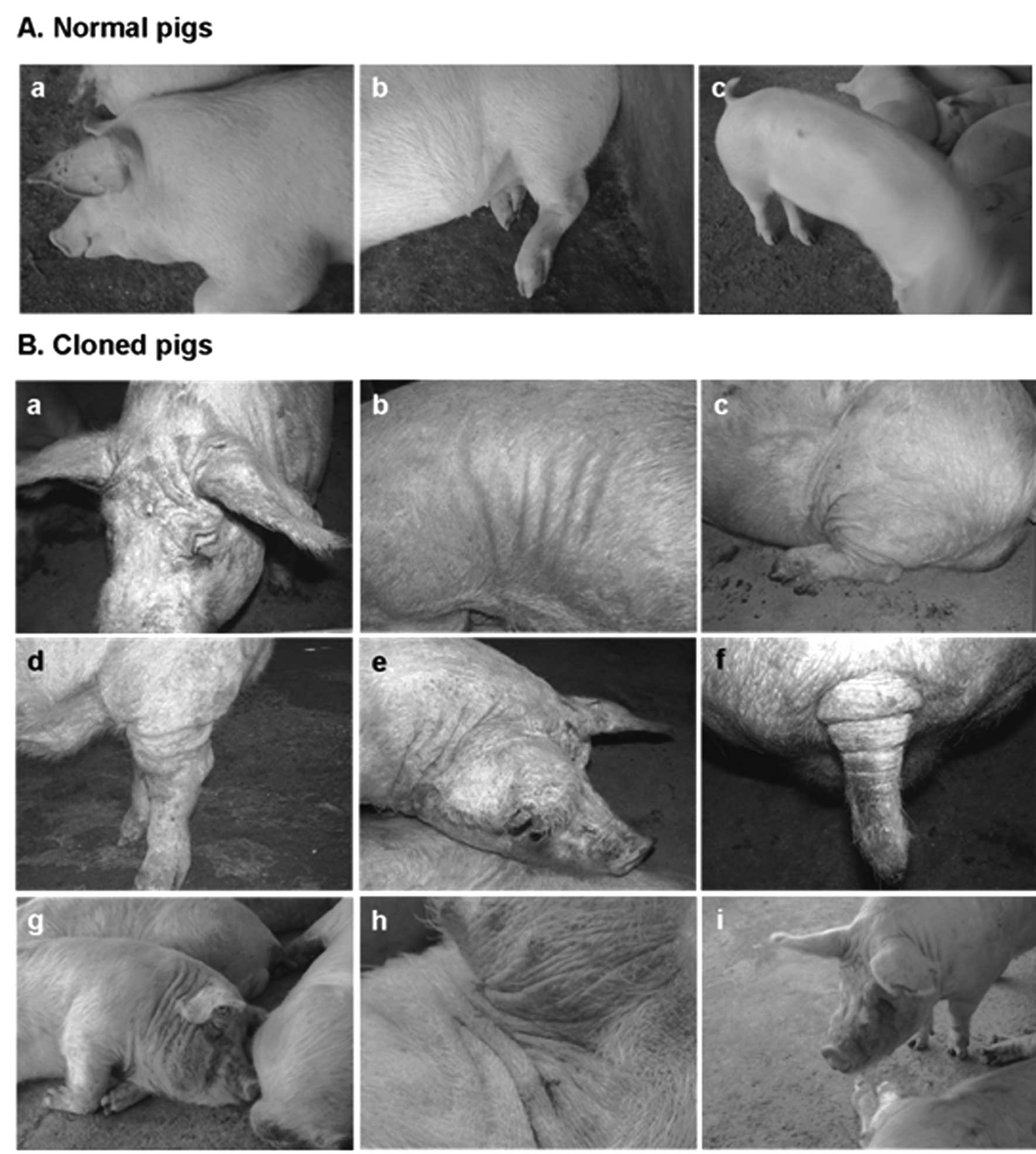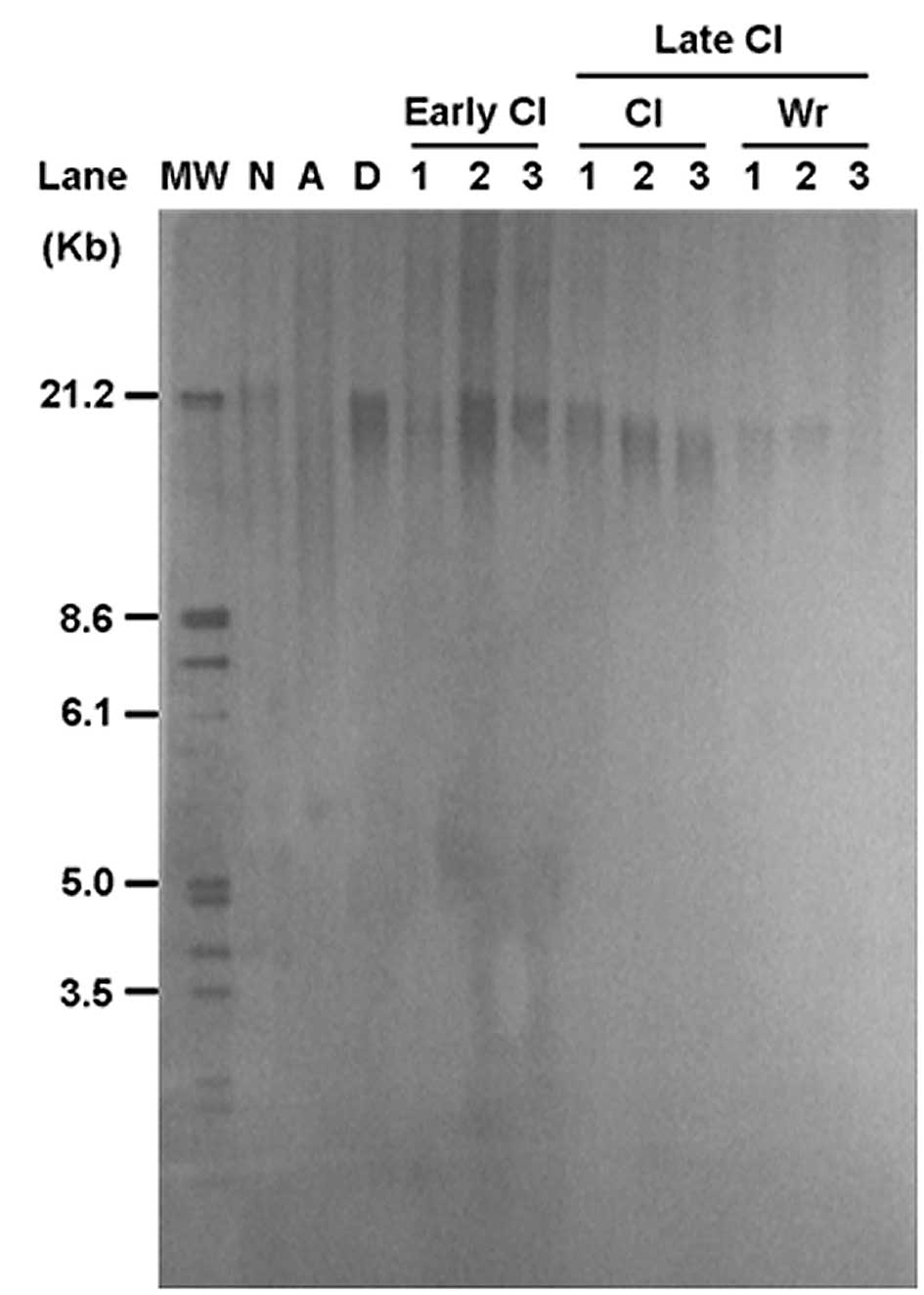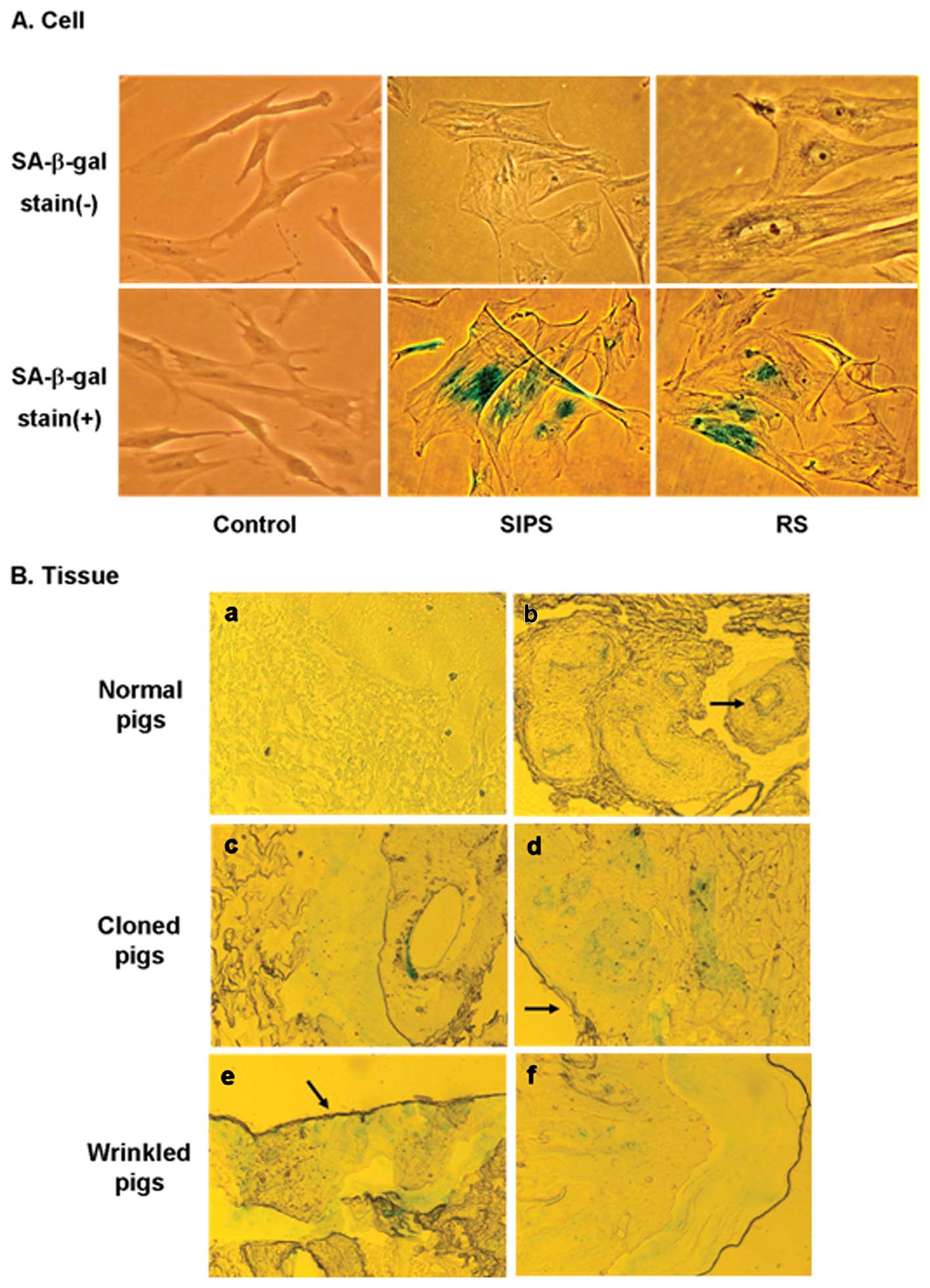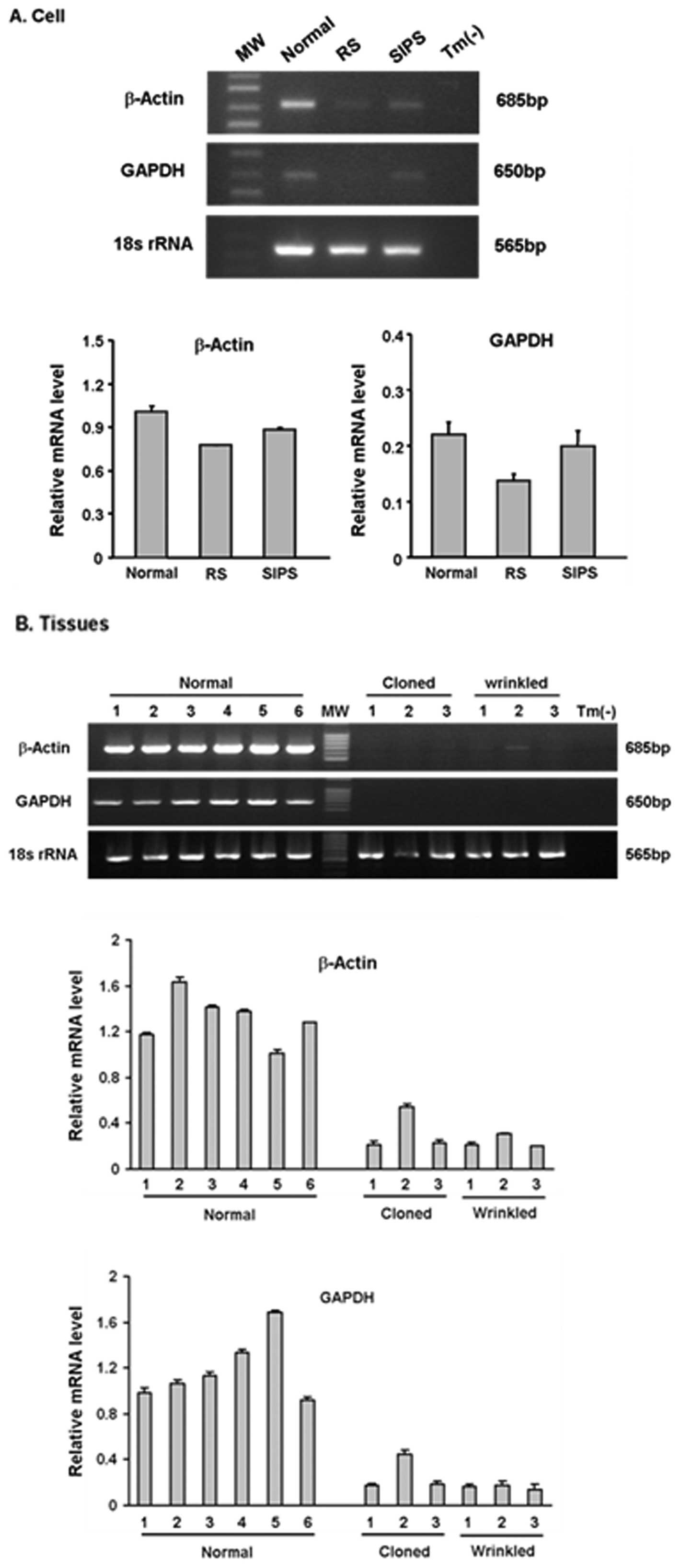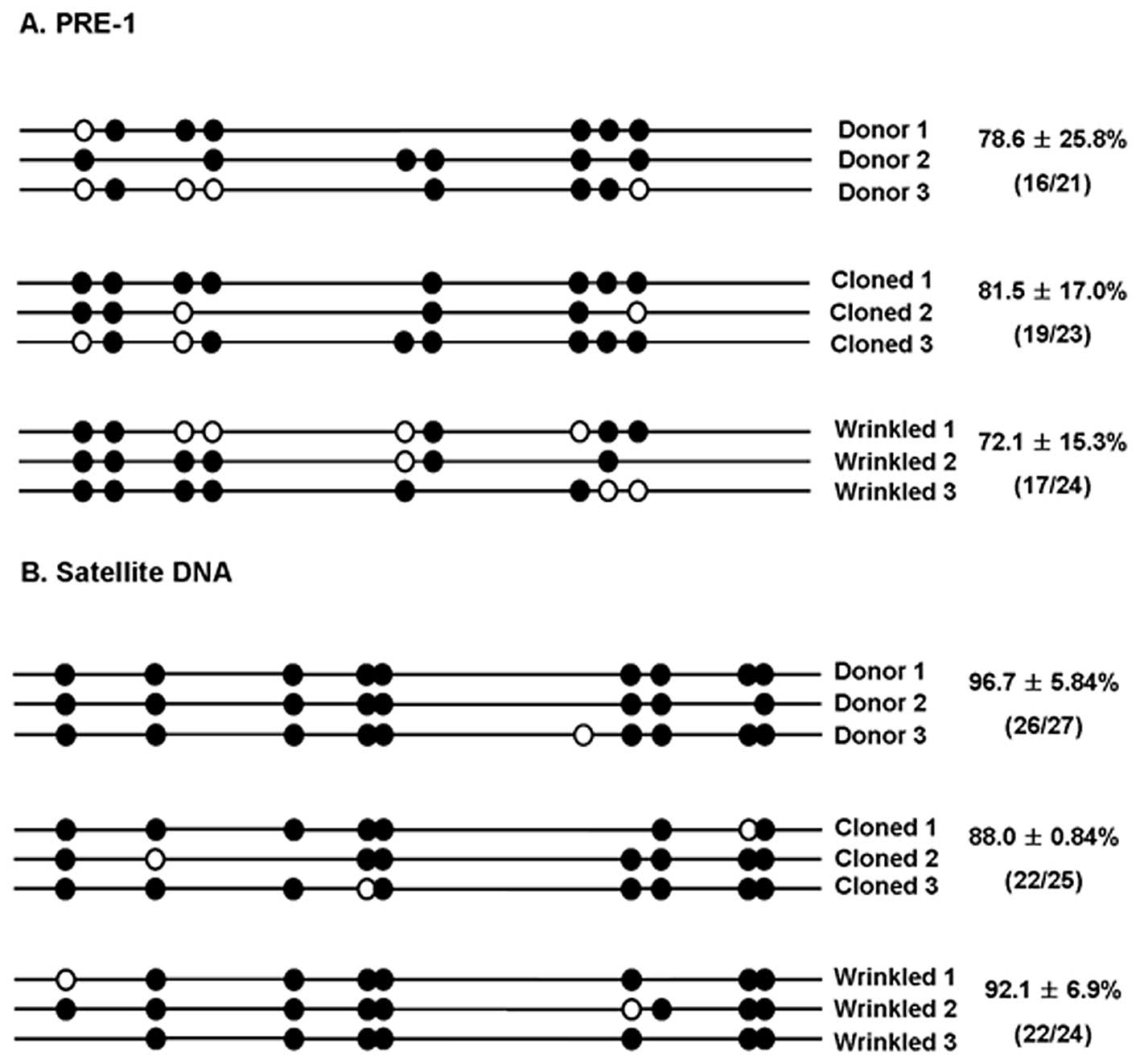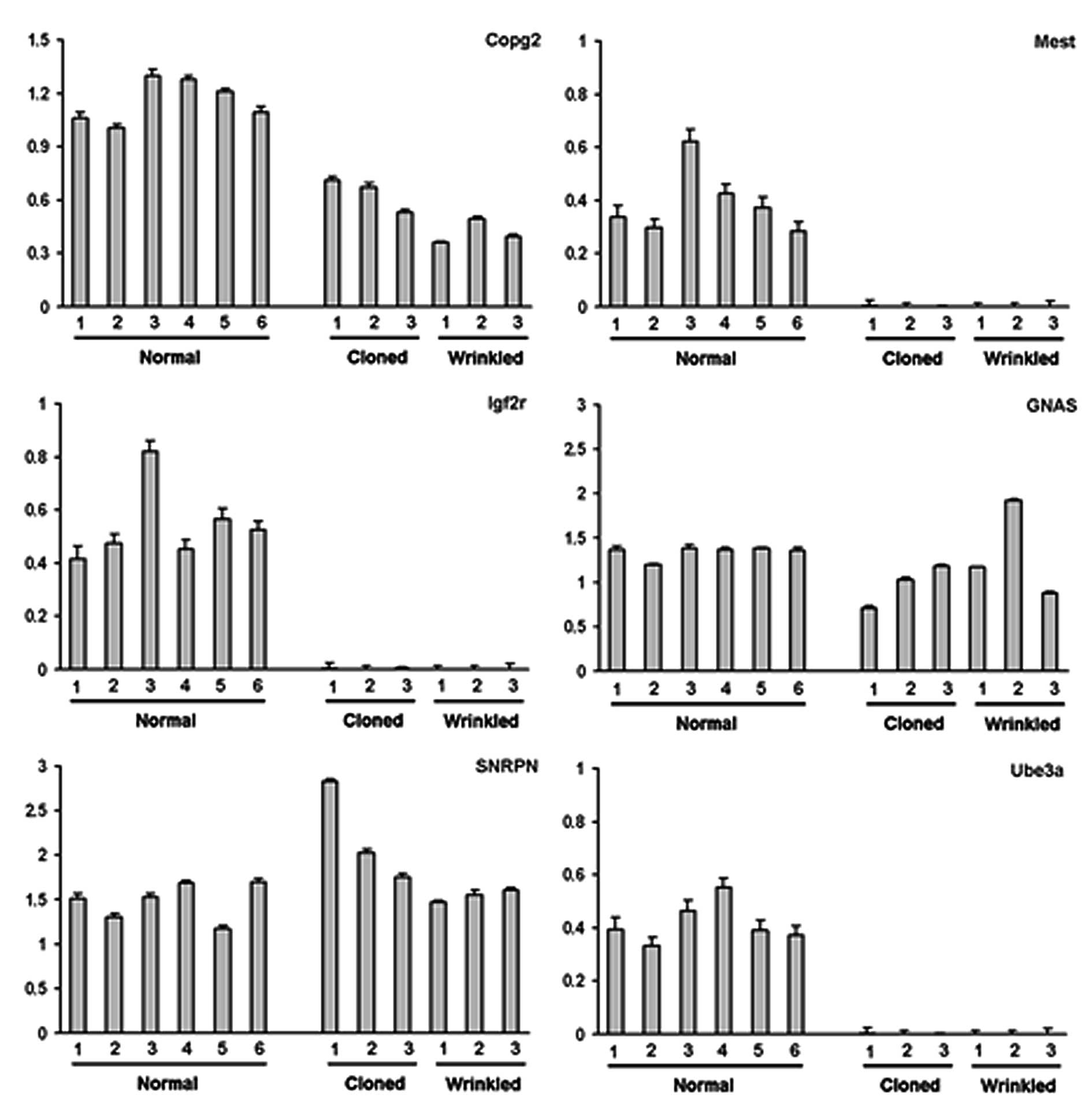|
1.
|
I WilmutAE SchniekeJ McWhirAJ KindKH
CampbellViable offspring derived from fetal and adult mammalian
cellsNature385810813199710.1038/385810a09039911
|
|
2.
|
KH CampbellJ McWhirWA RitchieI WilmutSheep
cloned by nuclear transfer from a cultured cell
lineNature3806466199610.1038/380064a08598906
|
|
3.
|
JB CibelliSL SticePJ GoluekeCloned
transgenic calves produced from nonquiescent fetal
fibroblastsScience28012561258199810.1126/science.280.5367.12569596577
|
|
4.
|
Y KatoT TaniY SotomaruEight calves cloned
from somatic cells of a single
adultScience28220952098199810.1126/science.282.5396.20959851933
|
|
5.
|
K ShigaT FujitaK HiroseY SasaeT
NagaiProduction of calves by transfer of nuclei from cultured
somatic cells obtained from Japanese black
bullsTheriogenology52527535199910.1016/S0093-691X(99)00149-110734386
|
|
6.
|
Y KK GotoS KobayashiK ImaiM Shin-nohT
TsujinoT NakanoS MatsudaS NakaneT KojimaBirth of cloned calves
derived from cultured oviductal epithelial cells of a dairy cowAnim
Sci J702432451999
|
|
7.
|
C KubotaH YamakuchiJ TodorokiSix cloned
calves produced from adult fibroblast cells after long-term
cultureProc Natl Acad Sci
USA97990995200010.1073/pnas.97.3.99010655472
|
|
8.
|
A BaguisiE BehboodiDT MelicanProduction of
goats by somatic cell nuclear transferNat
Biotechnol17456461199910.1038/863210331804
|
|
9.
|
A OnishiM IwamotoT AkitaPig cloning by
microinjection of fetal fibroblast
nucleiScience28911881190200010.1126/science.289.5482.118810947985
|
|
10.
|
IA PolejaevaSH ChenTD VaughtCloned pigs
produced by nuclear transfer from adult somatic
cellsNature4078690200010.1038/3502408210993078
|
|
11.
|
J BetthauserE ForsbergM
AugensteinProduction of cloned pigs from in vitro systemsNat
Biotechnol1810551059200010.1038/8024211017042
|
|
12.
|
T WakayamaR YanagimachiCloning of male
mice from adult tail-tip cellsNat
Genet22127128199910.1038/963210369248
|
|
13.
|
T WakayamaY ShinkaiKL TamashiroCloning of
mice to six
generationsNature407318319200010.1038/3503030111014179
|
|
14.
|
T WakayamaAC PerryM ZuccottiKR JohnsonR
YanagimachiFull-term development of mice from enucleated oocytes
injected with cumulus cell
nucleiNature394369374199810.1038/286159690471
|
|
15.
|
LE YoungKD SinclairI WilmutLarge offspring
syndrome in cattle and sheepRev
Reprod3155163199810.1530/ror.0.00301559829550
|
|
16.
|
P Chavatte-PalmerY HeymanJP RenardCloning
and associated physiopathology of gestationGynecol Obstet
Fertil28633642200011075501
|
|
17.
|
JR HillAJ RousselJB CibelliClinical and
pathologic features of cloned transgenic calves and fetuses (13
case
studies)Theriogenology5114511465199910.1016/S0093-691X(99)00089-810729073
|
|
18.
|
JR HillRC BurghardtK JonesEvidence for
placental abnormality as the major cause of mortality in
first-trimester somatic cell cloned bovine fetusesBiol
Reprod6317871794200010.1095/biolreprod63.6.178711090450
|
|
19.
|
H NiemannC WrenzyckiAlterations of
expression of developmentally important genes in preimplantation
bovine embryos by in vitro culture conditions: implications for
subsequent
developmentTheriogenology532134200010.1016/S0093-691X(99)00237-X
|
|
20.
|
WM Rideout IIIK EgganR JaenischNuclear
cloning and epigenetic reprogramming of the
genomeScience29310931098200110.1126/science.106320611498580
|
|
21.
|
XC TianReprogramming of epigenetic
inheritance by somatic cell nuclear transferReprod Biomed
Online8501508200410.1016/S1472-6483(10)61095-415151710
|
|
22.
|
JB GurdonA ColmanThe future of
cloningNature402743746199910.1038/4542910617195
|
|
23.
|
TH BestorCytosine methylation and the
unequal developmental potentials of the oocyte and sperm genomesAm
J Hum Genet6212691273199810.1086/3018919585619
|
|
24.
|
RP LanzaJB CibelliC BlackwellExtension of
cell life-span and telomere length in animals cloned from senescent
somatic
cellsScience288665669200010.1126/science.288.5466.66510784448
|
|
25.
|
W ReikER MaherImprinting in clusters:
lessons from Beckwith-Wiedemann syndromeTrends
Genet13330334199710.1016/S0168-9525(97)01200-69260520
|
|
26.
|
YK KangDB KooJS ParkTypical demethylation
events in cloned pig embryos. Clues on species-specific differences
in epigenetic reprogramming of a cloned donor genomeJ Biol
Chem2763998039984200110.1074/jbc.M10651620011524426
|
|
27.
|
W DeanF SantosM StojkovicConservation of
methylation reprogramming in mammalian development: aberrant
reprogramming in cloned embryosProc Natl Acad Sci
USA981373413738200110.1073/pnas.24152269811717434
|
|
28.
|
YK KangJS ParkDB KooLimited demethylation
leaves mosaic-type methylation states in cloned bovine
pre-implantation embryosEMBO
J2110921100200210.1093/emboj/21.5.109211867537
|
|
29.
|
SM TilghmanThe sins of the fathers and
mothers: genomic imprinting in mammalian
developmentCell96185193199910.1016/S0092-8674(00)80559-09988214
|
|
30.
|
AC Ferguson-SmithMA SuraniImprinting and
the epigenetic asymmetry between parental
genomesScience29310861089200110.1126/science.106402011498578
|
|
31.
|
PB VranaJA FossellaP MattesonT del RioMJ
O’NeillSM TilghmanGenetic and epigenetic incompatibilities underlie
hybrid dysgenesis in PeromyscusNat
Genet25120124200010.1038/7551810802670
|
|
32.
|
LE YoungK FernandesTG McEvoyEpigenetic
change in IGF2R is associated with fetal overgrowth after sheep
embryo cultureNat Genet27153154200110.1038/8476911175780
|
|
33.
|
Y KatoWM Rideout 3rdK HiltonSC BartonY
TsunodaMA SuraniDevelopmental potential of mouse primordial germ
cellsDevelopment12618231832199910101117
|
|
34.
|
GS LeeSH HyunHS KimImprovement of a
porcine somatic cell nuclear transfer technique by optimizing donor
cell and recipient oocyte
preparationsTheriogenology5919491957200310.1016/S0093-691X(02)01294-312600732
|
|
35.
|
S HyunG LeeD KimProduction of nuclear
transfer-derived piglets using porcine fetal fibroblasts
transfected with the enhanced green fluorescent proteinBiol
Reprod6910601068200310.1095/biolreprod.102.014886
|
|
36.
|
GS LeeHS KimSH HyunProduction of
transgenic cloned piglets from genetically transformed fetal
fibroblasts selected by green fluorescent
proteinTheriogenology63973991200510.1016/j.theriogenology.2004.04.017
|
|
37.
|
YK KangDB KooJS ParkAberrant methylation
of donor genome in cloned bovine embryosNat
Genet28173177200110.1038/8890311381267
|
|
38.
|
PM WarneckeJR MannM FrommerSJ
ClarkBisulfite sequencing in preimplantation embryos: DNA
methylation profile of the upstream region of the mouse imprinted
H19 geneGenomics51182190199810.1006/geno.1998.53719722940
|
|
39.
|
HY JeonSH HyunGS LeeThe analysis of
telomere length and telomerase activity in cloned pigs and cowsMol
Reprod Dev71315320200510.1002/mrd.2027915806556
|
|
40.
|
GP DimriX LeeG BasileA biomarker that
identifies senescent human cells in culture and in aging skin in
vivoProc Natl Acad Sci
USA9293639367199510.1073/pnas.92.20.93637568133
|
|
41.
|
DA LoweH DegensKD ChenSE
AlwayGlyceraldehyde-3-phosphate dehydrogenase varies with age in
glycolytic muscles of ratsJ Gerontol A Biol Sci Med
Sci55B160B164200010.1093/gerona/55.3.B16010795720
|
|
42.
|
TK MoeJ ZiliangA BarathiRW
BeuermanDifferential expression of glyceraldehyde-3-phosphate
dehydrogenase (GAPDH), beta actin and hypoxanthine
phosphoribosyltransferase (HPRT) in postnatal rabbit scleraCurr Eye
Res234450200110.1076/ceyr.23.1.44.5420
|
|
43.
|
W ReikW DeanJ WalterEpigenetic
reprogramming in mammalian
developmentScience29310891093200110.1126/science.106344311498579
|
|
44.
|
GS LeeHS KimSH LeeSuccessful surgical
correction of anal atresia in a transgenic cloned pigletJ Vet
Sci6243245200516131829
|
|
45.
|
SJ UhmHM ChungC KimIn vitro development of
porcine enucleated oocytes reconstructed by the transfer of porcine
fetal fibroblasts and cumulus
cellsTheriogenology54559570200010.1016/S0093-691X(00)00371-X11071130
|
|
46.
|
P ChesnePG AdenotC VigliettaM BaratteL
BoulangerJP RenardCloned rabbits produced by nuclear transfer from
adult somatic cellsNat
Biotechnol20366369200210.1038/nbt0402-36611923842
|
|
47.
|
T ShinD KraemerJ PryorA cat cloned by
nuclear
transplantationNature415859200210.1038/nature72311859353
|
|
48.
|
EH BlackburnTelomere states and cell
fatesNature4085356200010.1038/3504050011081503
|
|
49.
|
RC AllsoppH VaziriC PattersonTelomere
length predicts replicative capacity of human fibroblastsProc Natl
Acad Sci USA891011410118199210.1073/pnas.89.21.101141438199
|
|
50.
|
CB HarleyHuman ageing and telomeresCiba
Found Symp21112914419979524755
|
|
51.
|
JA McKayEA WilliamsJC MathersFolate and
DNA methylation during in utero development and agingBiochem Soc
Trans3210061007200410.1042/BST032100615506948
|
|
52.
|
MR MannYG ChungLD NolenRI VeronaKE
LathamMS BartolomeiDisruption of imprinted gene methylation and
expression in cloned preimplantation stage mouse embryosBiol
Reprod69902914200310.1095/biolreprod.103.01729312748125
|
|
53.
|
L YangP Chavatte-PalmerC KubotaExpression
of imprinted genes is aberrant in deceased newborn cloned calves
and relatively normal in surviving adult clonesMol Reprod
Dev71431438200510.1002/mrd.2031115895469
|
|
54.
|
K InoueT KohdaJ LeeFaithful expression of
imprinted genes in cloned
miceScience295297200210.1126/science.295.5553.29711786635
|
|
55.
|
JM MilnerTE CawstonMatrix
metalloproteinase knockout studies and the potential use of matrix
metalloproteinase inhibitors in the rheumatic diseasesCurr Drug
Targets Inflamm
Allergy4363375200510.2174/156801005402214116101546
|















